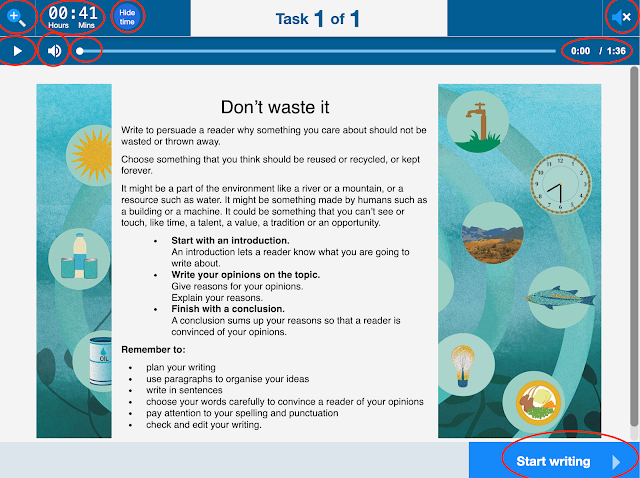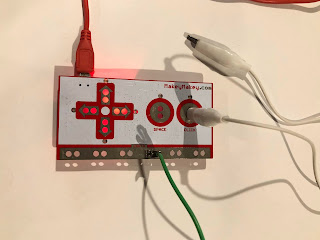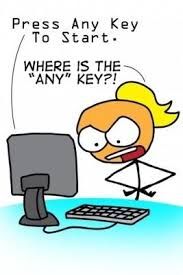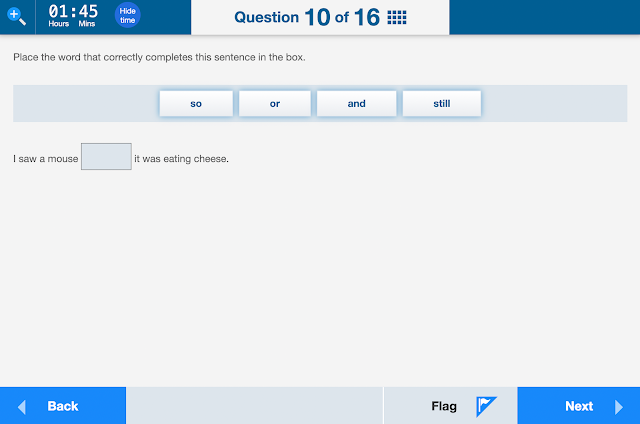How is social media useful for teachers?
What is social media and how can it be useful for teachers?
Published in Education Matters with corrections to the organisers of @EduTweetOz
Biography
Meridith Ebbs is teacher St Columba Anglican School, Port Macquarie. She has a blended role, teaching classes from years 2-10 and working as an eLearning integrator to support the eLearning programs and teacher professional development within the school.
Meridith is a key staff member of the Professional Excellence and Innovation Centre, Port Macquarie. She develops and facilitates conferences and workshops. Meridith acts as a consultant in digital citizenship, the use of technology to enhance 21century pedagogies and social media. Meridith is a moderator of a MOOC for Adelaide University and speaks at conferences on coding, technology and pedagogy.
Meridith is interested in computational thinking, coding and the maker movement. She is working on increasing the participation of girls in Science, Technology, Engineering and Maths (STEM) at all levels.
Meridith blogs regularly and can be followed on Twitter and Google Plus. She also curates resources on computational thinking and coding.
- Google Plus http://bit.ly/iMerinet
Social Media
Social media is everywhere. You can follow the news anchor on Twitter, you friend morning shows, Sunrise or Today on Facebook, the feeds are displayed in a ticket tape along the bottom of the screen. Advertising screams follow us. Marketing and business has discovered the power of social media yet many teachers have not. Social media for educators is a world of new ideas and resources. It makes people accessible. It is possible to tweet a person you admire and get a response.
What is the fascination with Facebook, Twitter, Instagram and Pinterest? Social media definitely has its critics but it also has its place. It is a way to connect with people you don’t see any more and with like minded strangers. The key factor for social media being useful is balance. Balancing time online, time away from family and privacy. It is important not to over share. Followers are not so interested in 50 snaps of your little treasures. Personal friends are not interested in the events of your day to day work life. One way to overcome this problem is to divide your social media into two domains. An example may be to use Facebook for your private personal account and Twitter for your public professional account.
Social media is a valuable tool for teachers, it offers a way to connect with like minded professionals and share resources and ideas. It offers an opportunity for debate and ideas that challenge and improve your professional practice.
If you choose to be online, you need to check your feed and tweet or post regularly. You need to monitor your profile as an abandoned online profile is more of a security risk to you if it is not used. People are more likely to follow and interact with an active account.
Many teachers have started twitter accounts for their classroom. The teacher is the account owner, preferably with their school email. It is then possible to for students as young as Kindergarten to compose the tweet that is to be posted. This may include pictures of art work or activities in the classroom. To overcome privacy issues, parents should be required to give permission to allow the use of student images. If you are still concerned take the photos over the students shoulder or of hands while working, this will reduce the number of faces posted on line. Never post an image with a full name. This adds to student privacy.
This article is about professional development of teachers and personal use. This article does not investigate or discuss the be benefits of using social media in the classroom and the benefits of digital citizenship for students.
What the twitter is that?
Twitter is a social media website. Twitter has a reputation for being used by celebrities “tweeting” events and photos. Twitter is a tool that can be used by teachers to interact with other professionals, locate resources and answer questions. It is used for microblogging. A tweet consists of 140 characters and spaces. It is a quick way to share information. Due to the length of characters people often use abbreviations and shorten urls using tools that are discussed later in the article.
Professional Learning Networks
A professional learning network is sometimes referred to as a PLN. PLNs can be people you work with or know personally, offline contacts or they may be people you haven’t met and only contact virtually through a mail list or social media. A PLN may consist of current or past colleagues, acquaintances from other schools in a similar role to you or people you have connected with online.
The benefit of a PLN is it gives an extended international network of people who are willing to help and assist you. PLNs provide resources, links and ideas that can be used immediately or stored for another time.
When attending conferences and inter-school events PLNs go offline. Meeting an online contact at a conference is an opportunity to further develop relationships that go beyond the classroom.
How to get followers
To get followers you need to be active on Twitter and tweet regularly. Twitter teachers are very generous and will often recommend users to follow and will often follow back.
To get the most out of twitter you need to
- update your profile
- change your profile picture from an egg (to show you didn’t just hatch)
- interact with other users
- retweet things you like with acknowledgement
- blog and share a link
- tweet regularly
- share photos and memes
- share tips and tricks to get organized or complete a task
- share a link to a useful site
If you think other users will be interested in your tweet you can add a photo and tag them. People who are tagged are likely to retweet or quote your tweet. This will in turn share your tweet with their followers.
I don’t have time
The main reason often cited for not joining social media is I don’t have time. Everyone has the same amount of time and it comes down to priorities. To fit Twitter into a busy schedule you could check your Twitter feed while:
- Waiting … for transport, in a queue or for a late friend
- 10 mins at lunch break
- Get up 10 mins earlier
The benefit of twitter is you don’t have to read every item in your twitter feed.
- You can skim through your feed for tweets that catch your eye.
- Check the feed of your favourite tweeter
- Check your favourite hashtag or channel eg: #aussieED
- Create a list of favourite people
Channels
When tweeting, to increase the number of people who see your tweets you can add hashtags. Hashtags are sometimes referred to as channels and they are used at large events, by organisations and by groups online. Hashtags are also used on Twitter for “Tweet meets” or chats. These are events that are held at regular times on twitter and usually go for 1 hour. A moderator will post a series of questions at regular intervals during the hour long chat. The questions stimulate discussion on the topic, which leads to pictures, links, resources, stories and more questions. Some popular chats on education are listed below. There are many more lists for specialty areas in English, History, PD/H and languages. To find more chats you can ask fellow tweeters or do a Google Search.
Popular education chats can be found on all KLAs and areas of education.
Day
|
Time
|
Handle
|
Contact
|
Handle
|
Sunday
|
7:30
|
#includEDau
| ||
Sunday
|
8:30pm AEST
|
#aussieED
|
AussieED
| |
Friday
|
9:00am AEST
|
#whatisschool
|
Craig Kemp and Laura Hill
| |
Tuesday
|
2nd Tuesday each month at 8pm AEDT.
|
#ozcschat
|
Phillip Cooke
| |
Saturday
|
9-10:30
|
#satchatoc
|
Andrea Stringer
|
A slow chat is one that goes over several hours, days or a week.
Handle
|
Channel
|
Organiser
|
Handles
|
@EduTweetOz
|
#edutweetoz
|
Allison Fairy
Corinne Campbell
Donelle Batty
jarvisryan
jenglish2013
Mark Johnson
Michelle Hostrup
Kerry Muste
|
@amuseED
@corisel
@dbatty1
@jarvis001
@janeng
@poppyshel
@KerryMuste
|
People you must follow – just to get you started
Name | Role | Tweets About | Handle |
Meridith Ebbs (Australia)
|
Teacher, eLearning, Speaker
|
Education, pedagogy, innovative teaching practice
| |
Kim Sutton
|
Teacher, co-moderator #aussieED
|
Education
| |
Nick Brierley (Australia)
|
Teacher, co-moderator #aussieED
|
Education, innovative practice
| |
Zeina Chalich (Australia)
|
Teacher, co-moderator #aussieED
|
Education, innovative practice
| |
Eric Sheninger (USA)
|
Past Principal, Speaker
|
Leadership, management styles
| |
Jackie Child (Australia)
|
Librarian
|
Makerspace, library, digital literacy
| |
Ian Jukes (Canada)
|
Education Evangelist
| ||
Australian Institute for Teaching and School Leadership (Australia)
|
Resources for implementing curriculum
| ||
Teachers Education Review Podcast (Australia)
|
Australian podcast discussing issues in education.
|
Issues in education from the perspective of classroom teachers.
| |
EduTweetOZ (Australia)
|
New host each week
|
Varies depending on the hosts interests
| |
Super-Awesome Sylvia (USA)
|
Started her own YouTube channel at 8yo
|
Maker Movement
| |
Sylvia Martinez (USA)
|
Speaker, education evangelist
|
Maker Movement, Education
|
Tips and Tricks
URL shorteners
Twitter has a limit of 140 characters and spaces. This makes posting long URLs difficult. To overcome the character limit URL shorteners are used such as http://bit.ly/1Lpmhxm to link to websites.
To create the shortened link above:
- Paste the web address (URL) for the original site, to be shortened into the box at the top of the page.
- A screen will appear on the right side of the page and click on Copy.
- Paste the bit.ly link into your tweet.
It is possible to customize the end of the link. It is also possible to download shorteners like bit.ly as apps to ipads and mobiles. This allows you to shorten URLs while using a mobile device.
Fitting it in
To fit long messages into 140 characters:
- Use acronyms
- f2f – face to face
- brb – be right back
- Ts – teachers
- Ss – students
- Use + for and
Dictionary of Twitter terms from support.twitter.com
Term
|
Definition
|
@
|
The @ sign is used to call out usernames in Tweets: "Hello @twitter!" People will use your @username to mention you in Tweets, send you a message or link to your profile.
|
@username
|
A username is how you're identified on Twitter, and is always preceded immediately by the @ symbol. For instance, Katy Perry is @katyperry.
|
Direct Messages (n., v.)
|
Direct Messages are private messages sent from one Twitter user to another Twitter users. You can use Direct Messages for one-on-one private conversations, or between groups of users.
|
favorite (n.)
|
Favoriting a Tweet indicates that you liked a specific Tweet. You can find all of your favorite Tweets by clicking on the favorites link on your profile page.
|
favorite (v.)
|
Tap the star icon to favorite a Tweet and the author will see that you liked it.
|
follow (v.)
|
Subscribing to a Twitter account is called “following.” To start following, click the Follow button next to the user name or on their profile page to see their Tweets as soon as they post something new. Anyone on Twitter can follow or unfollow anyone else at any time, with the exception of blocked accounts.
|
follow(s) (n.)
|
A follow is the result of someone following your Twitter account. You can see how many follows (or followers) you have from your Twitter profile.
|
follower (n.)
|
A follower is another Twitter user who has followed you to receive your Tweets in their Home stream.
|
geolocation (n.), geotagging (v.)
|
Adding a location to your tweet (a geolocation or geotag) tells those who see your Tweet where you were when you posted that Tweet.
|
# hashtag (n.)
|
A hashtag is any word or phrase immediately preceded by the # symbol. When you click on a hashtag, you'll see other Tweets containing the same keyword or topic. Sometimes referred to as a channel.
|
mention (n., v.)
|
Mentioning other users in your Tweet by including the @ sign followed directly by their username is called a “mention.” Also refers to Tweets in which your @username was included.
|
Meme
|
A picture with a quote or saying on it.
|
Notifications, notifications (n.)
|
The Notifications timeline displays your interactions with other Twitter users, like mentions, favorites, Retweets and who has recently followed you. If you request it, we send notifications to you via SMS or through the Twitter for iPhone or Twitter for Android apps.
|
reply (n., v.)
|
A response to another user's Tweet that begins with the @username of the person you're replying to is known as a reply. Reply by clicking the "reply" button next to the Tweet you'd like to respond to.
|
Retweet (n.), RT
|
A Tweet that you forward to your followers is known as a Retweet. Often used to pass along news or other valuable discoveries on Twitter, Retweets always retain original attribution.
|
Retweet (v.)
|
The act of sharing another user's Tweet to all of your followers by clicking on the Retweet button.
|
Tweet (n.), Tweetable (adj.)
|
A Tweet may contain photos, videos, links and up to 140 characters of text.
|
Tweet (v.)
|
The act of sending a Tweet. Tweets get shown in Twitter timelines or are embedded in websites and blogs.
|
Twitter
|
An information network made up of 140-character messages (including photos, videos and links) from all over the world.
|
References
URL shorteners http://bit.do/list-of-url-shorteners.php









Comments
Post a Comment